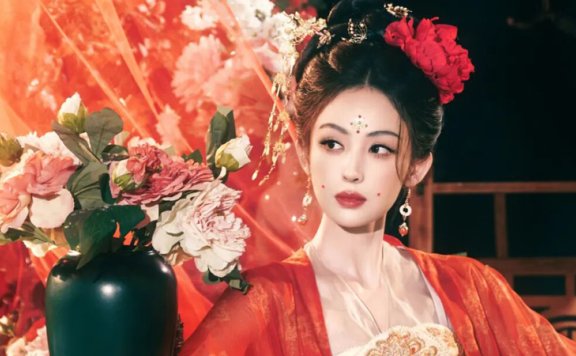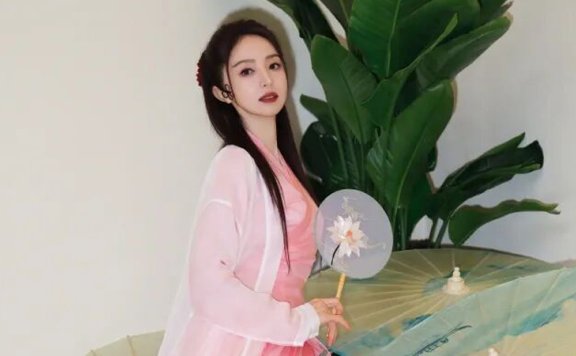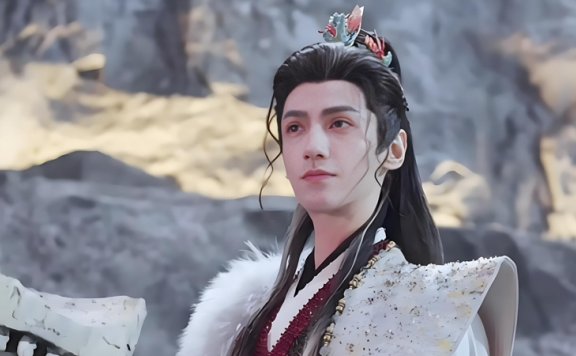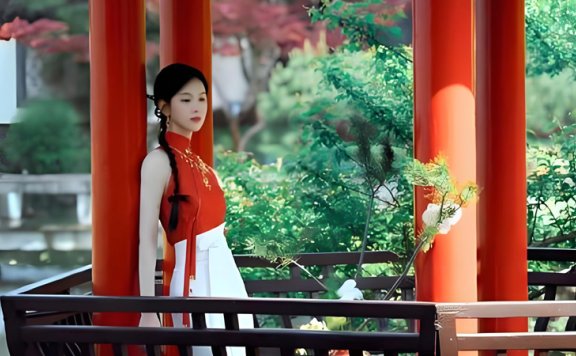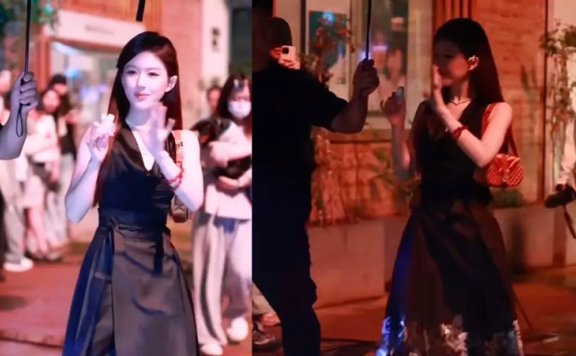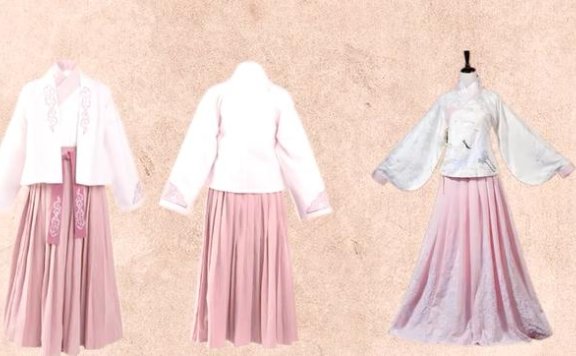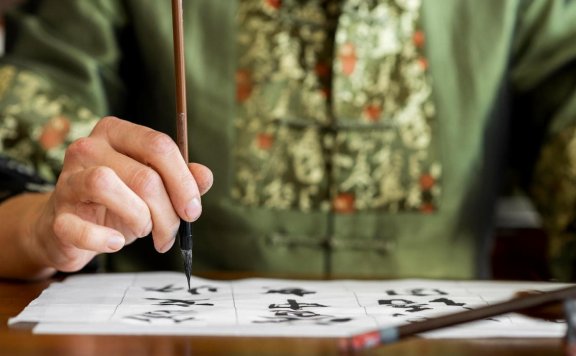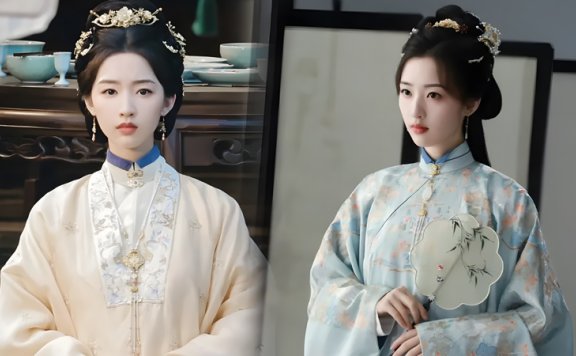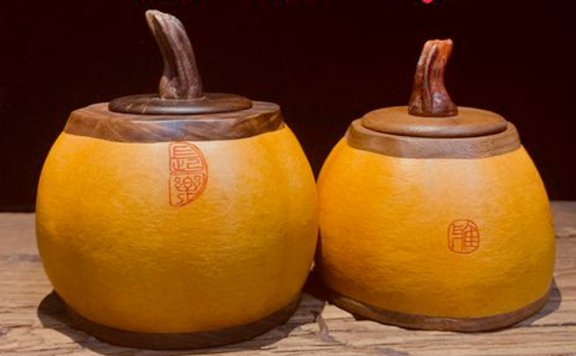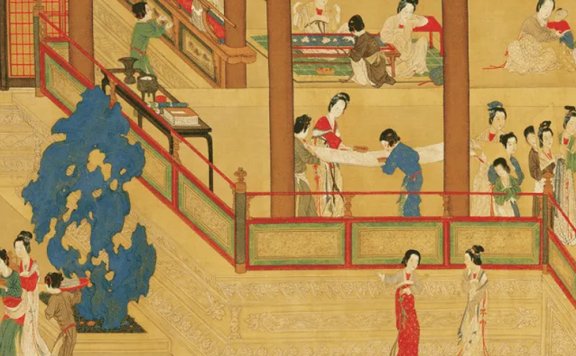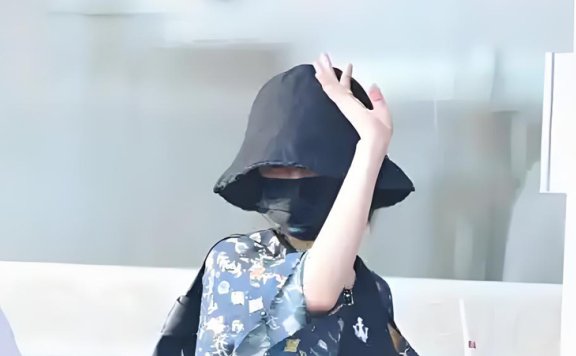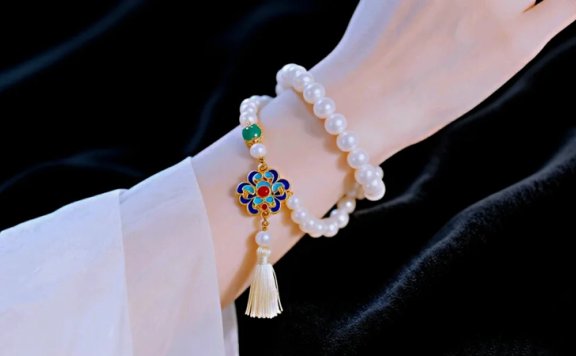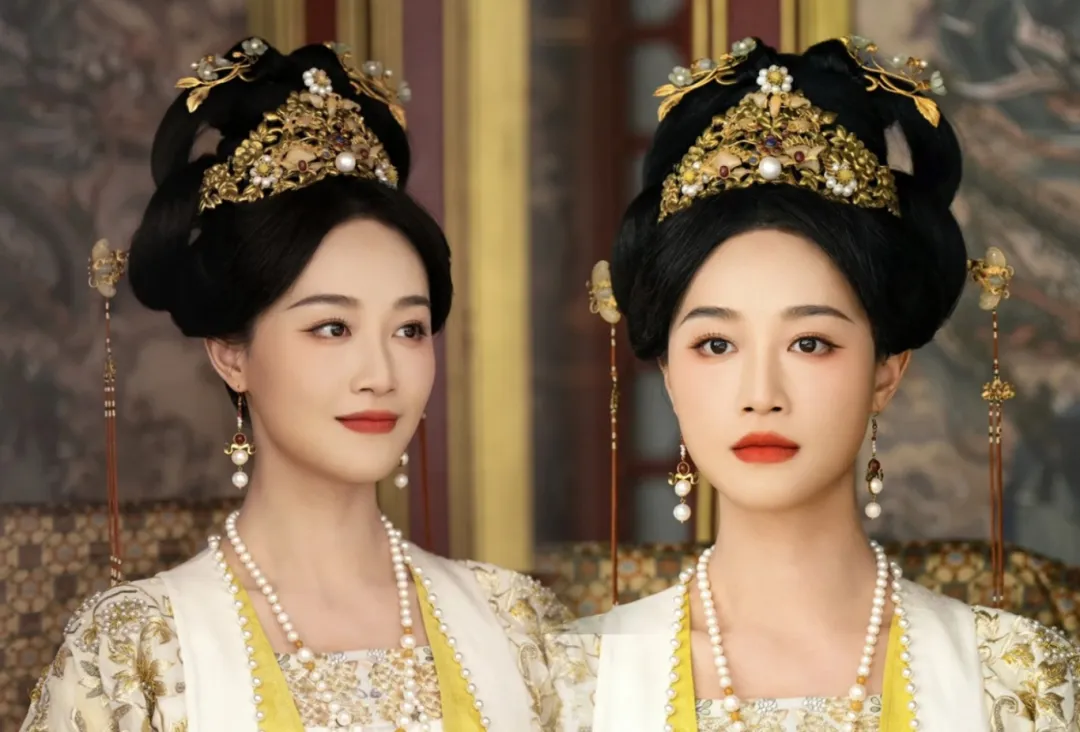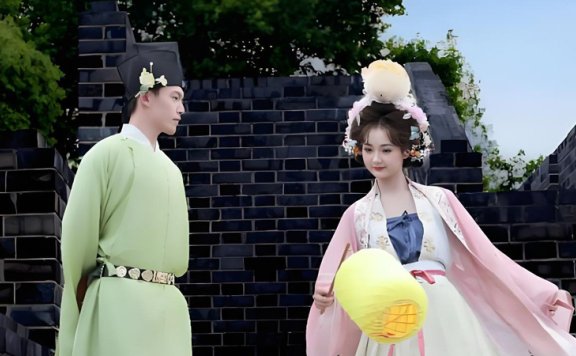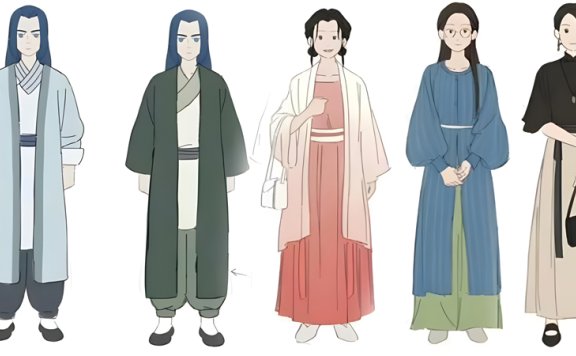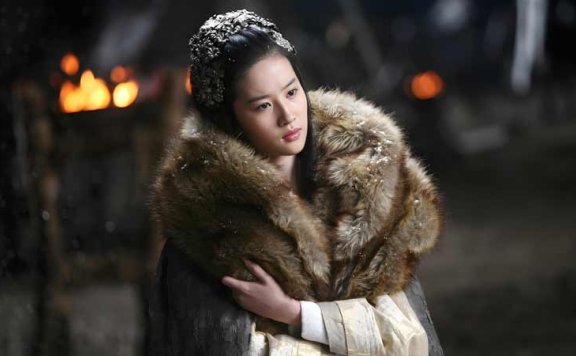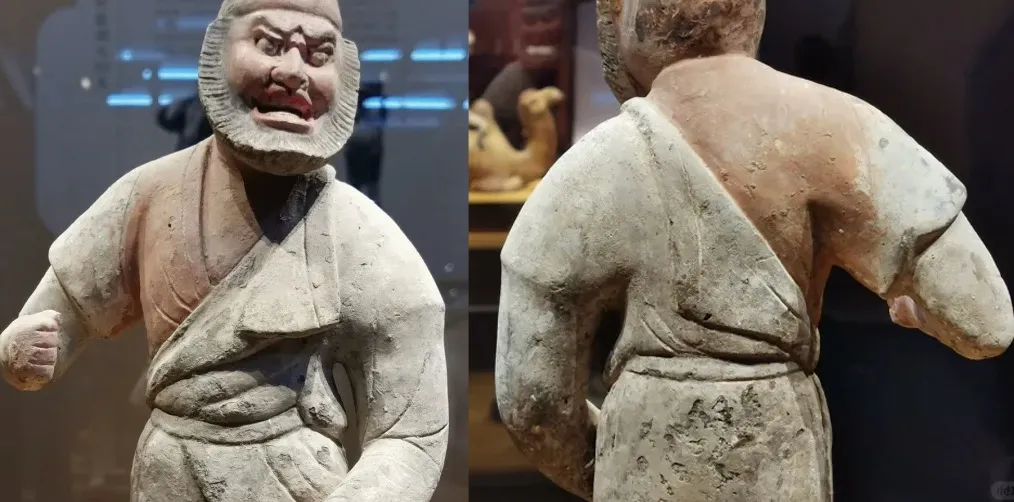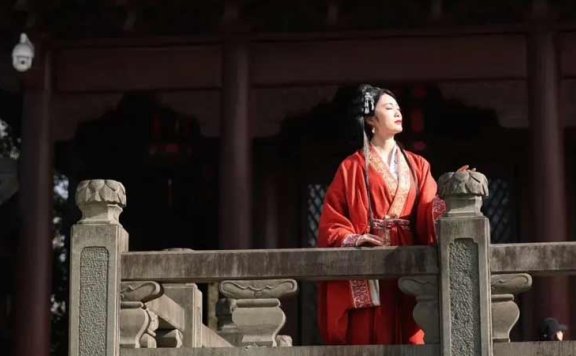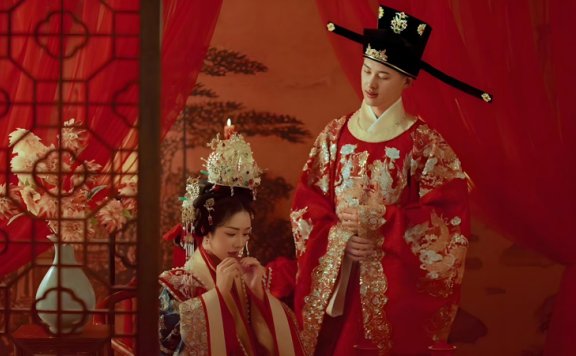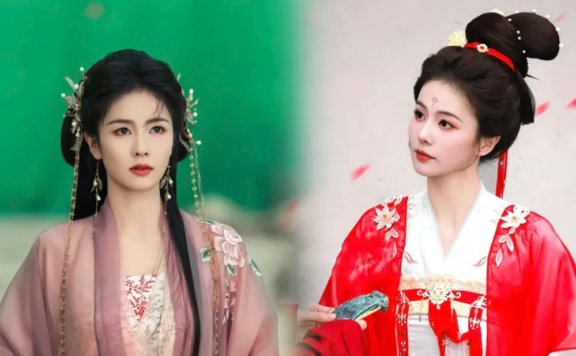Article
搜索结果:
-
Tang Dynasty Hanfu: How Celebrities and Flattering Styles Win Hearts
In today's fashion landscape, traditional attire from China's Tang Dynasty is experiencing a vibrant resurgence. This era, celebrated for its cultural prosperity and artistic innovation, has left a lasting legacy in clothing that emphasizes grace and adaptability. Hanfu styles from this period, with their flowing silhouettes and intricate details, are being rediscovered by a new generation. What makes them particularly appealing is their ability to flatter diverse body types and facial features, moving beyond rigid beauty standards. From curvy figures exuding opulence to slender frames radiating elegance, Tang Hanfu offers a versatile canvas for self-expression. Recent television series and celebrity endorsements have amplified this trend, making it more accessible and inspiring people to embrace their unique beauty through historical fashion. Flattering Designs The Qixiong Ruqun (齐胸襦裙) stands out as a quintessential Tang Dynasty garment, known for its high-waisted cut that rests above the bust. This design creates a universally flattering shape by avoiding tight fits and instead using soft, draping fabrics that flow with the body. For those with curvier builds, the loose structure and billowing sleeves help smooth lines and convey a sense of dignified luxury. Slimmer individuals find that the lightweight materials enhance their natural grace, adding an… -
46-Year-Old Dong Xuan Stuns in Pink Hanfu
When photos of Dong Xuan (董璇), a 46-year-old actress, surfaced online in a stunning pink Hanfu ensemble, they instantly captivated audiences. The images, set against a backdrop reminiscent of Jiangnan's scenic beauty, showcase her in a flowing, gauzy dress that seems to dance with the breeze. This isn't just another celebrity photoshoot; it's a vivid portrayal of classical elegance meeting modern grace. Her choice of a round fan adorned with lotus motifs and traditional embroidered shoes completes the look, making it a topic of widespread admiration. At an age where many might shy away from bold fashion statements, Dong Xuan demonstrates how timeless style transcends generations. The response has been overwhelming, with fans and fashion enthusiasts alike praising her ability to embody the spirit of traditional Chinese aesthetics so effortlessly. This moment highlights a growing appreciation for cultural elements in contemporary media, and Dong Xuan's presentation serves as a perfect entry point into this discussion. The Ensemble The pink gradient Hanfu worn by Dong Xuan features layers of sheer silk that create a soft, ethereal effect. Its design includes delicate sleeves that flutter gently, evoking the tranquil atmosphere of a water town in southern China. The color transitions from light… -
The Making of Destiny in Whispers of Fate
How does a man haunted by his past forge a new destiny in a world of martial arts and mystery? This is the central question at the heart of the captivating Wuxia drama, Whispers of Fate (水龙吟). Led by the enigmatic Tang Lici (唐俪辞), a group of skilled fighters navigate a landscape of ancient sects, personal vendettas, and hidden truths. The story unfolds as Tang journeys to the famed Sword King City, but his path is anything but direct. From a treacherous encounter at the mysterious Thirteen Floors to gaining an unlikely ally, each step reveals more about his complicated history and the limited time he has to confront it. A Perilous Shortcut After bidding farewell to Zhong Chunji (钟春髻), Tang Lici continues his travels with his companions, Chi Yun (池云) and A Shui (阿谁). Their journey takes a dramatic turn when their boat is sucked into a massive whirlpool. Instead of leading to disaster, the vortex transports them directly to the gates of an elusive and powerful organization, the Thirteen Floors. Chi Yun is astounded, having known the place as notoriously difficult to enter. The master of the Thirteen Floors is waiting for them, and he immediately recalls the… -
Chen Duling’s Zhuozheng Garden Hanfu Photoshoot
In an era dominated by fast-paced digital consumption, a recent photoshoot featuring Chen Duling (陈都灵) at Zhuozheng Garden (拙政园) has captivated millions, sparking conversations beyond mere aesthetics. Dressed in traditional Hanfu attire, her red and white ensemble against the garden's classical backdrop evokes a sense of timeless elegance. This imagery resonates deeply in a society grappling with constant noise, offering a visual pause that challenges modern beauty norms. Rather than a fleeting trend, it invites reflection on how authenticity and craftsmanship can thrive today. The response highlights a growing appetite for substance over speed, where every detail tells a story of cultural continuity and personal resonance. Craftsmanship Revived At the heart of Chen Duling's photoshoot lies an emphasis on meticulous artistry. Each element, from the hand-stitched Pan Kou (盘扣) buttons to the Baiyuzan (白玉簪) hairpin, was crafted by skilled artisans, underscoring a dedication to time-honored techniques. This attention to detail contrasts sharply with mass-produced Hanfu variants that prioritize speed over substance. The deliberate choice of materials and methods not only enhances visual appeal but also reinforces the garment's relationship with the wearer's form. It transforms clothing into a narrative of patience and precision, making beauty tangible through every thread and… -
Can Hanfu Break Free from Tradition in Love's Freedom?
In the television drama Love's Freedom (许我耀眼), the character Xu Yan (许妍), portrayed by popular actress Zhao Lusi (赵露思), embarks on a challenging entrepreneurial venture: modernizing traditional Chinese clothing. Her struggle mirrors a real-world debate simmering across the country. As Hanfu and other ethnic styles gain visibility, a critical question emerges: what kind of innovation truly honors these garments while making them relevant for today? The series does not offer easy answers, but it successfully frames a vital conversation about cultural identity in a fast-moving world. It moves beyond simple nostalgia, probing how historical attire can find a genuine place in contemporary closets, not just in photo studios or ceremonial events. The journey is far from straightforward. Love's Freedom illustrates the delicate balance required when tweaking centuries-old designs. Some purists argue that any alteration dilutes cultural authenticity, while others believe that without adaptation, these beautiful garments risk becoming mere costumes. Xu Yan's fictional endeavor highlights a practical reality: for clothing to be worn, it must be livable. It must accommodate the pace of modern life, from commuting on public transport to working in an office. The show suggests that the future of ethnic fashion lies not in perfect museum-quality replication,… -
Illustrated Ancient Clothing: Learn Hanfu’s Basic Features and Forms
Hanfu represents the enduring attire system of the Han ethnic group, reflecting centuries of cultural practices and aesthetic values. This clothing is defined by precise elements like the right-crossing collar, broad sleeves, and hidden ties, distinguishing it from modern interpretations. It serves as a functional record of China's historical identity, blending philosophy with daily wear. Early forms such as the Shenyi (深衣) from the Pre-Qin era laid the foundation, emphasizing unity in design. The Han period featured the Quju (曲裾) for formal events, while the Tang dynasty's Qixiong Ruqun (齐胸襦裙) expressed vibrancy and freedom. Song styles like the Beizi (褙子) favored understated elegance, and Ming innovations such as the Mamian Qun (马面裙) and Liling Aozi (立领袄子) highlighted technical mastery. Each shift mirrored societal values, creating a rich visual legacy. https://youtu.be/O8j8zk_WsBo 1. The basic characteristics of Hanfu Hanfu represents the traditional dress of the Han Chinese people, with a history that stretches back millennia. Its design principles are deeply rooted in cultural practices and aesthetic ideals, offering a unique perspective on garment construction. This clothing style emphasizes fluidity and grace, moving beyond mere fashion to embody a way of life. Each element of Hanfu serves a purpose, blending form and function… -
Korean Language Learning Paired with Chinese Calligraphy and Hanfu Workshops
I. Introduction to the Benefits of Cultural Learning The learning of culture is an enriching activity that surpasses language acquisition. It opens one's eyes to the traditions, customs, and artistic expressions that shape a society. When individuals embark on learning a foreign language, they are not merely memorizing vocabulary and grammar rules; they are tapping into a rich heritage of cultural richness. This exchange generates empathy, broadens world perspectives, and enhances communication skills, enabling students to connect with others on a personal level. A. Importance of Language Acquisition in Cultural Context Language reflects culture, adopting the values, beliefs, and history of a people. Through Korean learning, for example, students gain familiarity with the complexities of Korean society, including its etiquette, social norms, and historical context. Studying the language in its cultural context allows students to understand the subtleties of communication, such as honorifics for conveying respect and idiomatic expressions for revealing cultural attitudes. Not only does such a cultural approach enrich the process of learning the language, but it also fosters an attitude of global citizenship. B. Korean Language Overview Korean, the official language of both North and South Korea, stands out with its distinct phonetic and grammatical structures. Its… -
Deng Enxi's Ming-Era Hanfu in When the Flowers Bloom Radiate Poise
The historical drama When the Flowers Bloom (花开锦绣), starring Deng Enxi (邓恩熙) and Ding Yuxi (丁禹兮), has sparked lively discussions among viewers, particularly for its attention to Hanfu inspired by the Ming Dynasty. Set against a backdrop of imperial intrigue and personal growth, the series follows the journey of Deng's character as she navigates court life, with her wardrobe evolving to reflect her status. Many have noted that Deng appears more dignified and elegant in these costumes compared to her previous roles. This article delves into the craftsmanship, styling, and visual storytelling behind this transformation, exploring how Ming-style attire enhances character portrayal and why it resonates with modern audiences seeking authenticity in period dramas. Costume Craftsmanship In When the Flowers Bloom, Deng Enxi's wardrobe primarily features Ming Dynasty styles, such as the standing-collar robe paired with a Mamianqun (马面裙). The costumes incorporate techniques like gold-woven patterns and subtle embroidery, which were hallmarks of Ming nobility. These elements not only add richness but also convey the character's rising social standing through intricate details that catch the light differently on screen. One reason the attire appears so dignified is its balanced use of fabrics and decorations. For instance, gold-thread weaving and floral… -
Step-by-Step Guide to Making a Wine Gourd and Tea Caddy
Have you ever sipped wine from a vessel you made with your own hands? This ancient practice, transforming a humble gourd into a functional work of art, is experiencing a quiet resurgence. Beyond their rustic charm, dried gourds possess a unique set of qualities that make them ideal for storing precious commodities like tea and wine. Their natural, faintly sweet aroma doesn't transfer to the contents, and with the right sealing techniques, they become perfectly airtight containers. The process of creating these objects is a meditative craft, blending patience with practicality. It offers a tangible connection to tradition and the deep satisfaction of creating something both beautiful and useful from nature's bounty. Method of Making a Wine Gourd Selecting the right Hulu (葫芦) is the crucial first step. Look for one that is fully mature, with a hard, blemish-free shell and a shape that feels good in your hand. For a wine container, a classic rounded form with a narrow neck is perfect. A tea caddy often benefits from the broader, flatter profile of a "winter melon" gourd variety. The initial preparation is straightforward but requires a careful touch. Using a small saw, carefully cut around the top of the… -
Hanfu: More Than Clothing, a Millennium of Cultural Legacy
Walk down a modern city street, and you might spot a figure in flowing robes, hair adorned with Buyao Zhuchai (步摇珠钗), as if stepping out of an ancient painting. That’s Hanfu – a traditional garment making a comeback, but its meaning goes far beyond fashion. It’s a living bridge to China’s thousand-year-old culture, a piece of history worn with pride. Symbols Woven in Threads Hanfu, short for "Han Ethnic Traditional Clothing", is not just fabric stitched together. It’s a cultural symbol, a tangible reminder of who the Han people are. Every line, every fold, carries the weight of centuries. The Zuo Zhuan (左传), an ancient historical text, says: "China is called Xia for its grand rituals; Hua for its beautiful clothing." The very name "Huaxia" – what the Han people call themselves – ties identity to clothing. Hanfu embodies ancient values: hierarchical order, ethical cultivation , and aesthetic ideals. It’s not just clothes; it’s a language of culture. Take the "jiaoling youren" (交领右衽) – the cross-collar that overlaps to the right, forming a Y-shape. This isn’t a random design; it reflects the belief that "right is honorable," a core part of traditional ethics. Ribbons replace buttons, symbolizing harmony and inclusivity.… -
Hanfu on the Airport Runway: Yang Mi's Fashion Gambit That Divided China
When 38-year-old actress Yang Mi (杨幂) strode through Beijing Capital International Airport on August 17, 2023, she didn't just travel; she ignited a nationwide fashion firestorm. Her outfit – a black sleeveless maxi dress layered under a striking blue printed Hanfu jacket, paired with silver sneakers, a fisherman's hat, a croissant bag, and a green drink – was an audacious blend of ancient tradition and hyper-modern street style. Instantly, the terminal buzzed. Passersby gasped at her effortless cool, fans flooded social media with praise for "Mi-style fashion," and the internet erupted with a singular question: which of her peers would dare to challenge conventions so boldly at 38? This wasn't merely a celebrity look; it became a cultural Rorschach test, forcing a conversation about tradition, modernity, and who gets to define Chinese style. The Scene Yang Mi's choice was meticulously calculated nonchalance. The blue Hanfu jacket, featuring a Yuanlingpao (圆领袍) often associated with historical formality, was transformed. Its loose, contemporary cut and deliberate clash with casual items – the laid-back fisherman's hat, the playful croissant bag, and the ultimate disruptor, chunky silver sneakers – stripped away any stuffiness. This fusion catapulted Hanfu aesthetics squarely into the realm of Gen Z… -
Pearl & Cloisonne: Your Secret to Ethereal Hanfu Style!
Witnessing a revived tradition, Hanfu gracefully reclaims its place in modern wardrobes. This resurgence speaks volumes about our renewed appreciation for heritage aesthetics. The flowing silhouettes and delicate details of Hanfu naturally evoke an aura of timeless elegance. To truly amplify this ethereal charm, the right accessories are essential. Forget fleeting trends; discover how the classic pairing of lustrous pearls and vibrant Jingtai Lan (Cloisonne) beads can elevate your Hanfu look into something truly transcendent. Choosing complementary jewelry transforms an outfit. Soft-hued gemstones create the perfect foundation for Hanfu's delicate beauty. Think luminous white or blush pearls, serene moonstone, gentle rose quartz, aquamarine, honeyed amber, or the soft greens of jade or malachite. These subtle shades offer versatility. For those seeking a touch more intensity, garnet, lapis lazuli, or carnelian provide options. Today, we focus on mastering the exquisite harmony between pearls and Jingtai Lan, empowering you to craft a signature style. Color Harmony Rules The magic lies in balance. Pearls, especially classic white, offer unmatched softness and versatility. Their gentle sheen provides a calming base. Jingtai Lan, conversely, bursts with intricate, vivid colors achieved through its unique enamel artistry. This contrast demands careful pairing. Choose pearls as the dominant… -
Lan Yingying Wears Song Style Hanfu
In the cdrama Perfect Match, Lan Yingying (蓝盈莹) played the role of an imperial concubine, a legitimate daughter favored by the emperor. She also planned for her family, and we witnessed her growth and transformation. Let's start with the conclusion. The outfit Lan Yingying wore was a style of the large-sleeved shirt and skirt in Song Dynasty clothing. This kind of large-sleeved shirt was usually worn by women. It had a straight collar and a front-opening design and was mainly used as an outer garment. From Tang Dynasty paintings and unearthed clothing from the Song and Ming dynasties, we can see that the large-sleeved shirt was popular in the Tang, Song, and Ming dynasties. In the Song Dynasty, it developed into an important formal dress for noble women, especially as the daily wear for concubines. By the Ming Dynasty, the way of wearing the large-sleeved shirt was similar to that in the Song Dynasty. It was also listed as the regular clothing for queens and noble women. Typical styles included the bright red large-sleeved shirt and the bright yellow large-sleeved shirt. This evolution of the style reflects the historical continuity of traditional formal dress culture. The exquisite materials and elaborate… -
Song Dynasty Hanfu's Gentle Spirit in Today's World
When we speak of traditional Chinese attire, the grandeur of the Tang Dynasty often steals the spotlight, but the subtle grace of Song Dynasty Hanfu reveals a deeper, more refined essence of Chinese culture. Shedding the bold extravagance of its predecessor, Song Dynasty Hanfu embraces minimalist lines and muted hues, embodying an aesthetic of "unadorned beauty" that feels both ancient and strikingly modern. This exquisite style captures a quiet dignity, reflecting the inner cultivation prized in Song-era philosophy, and today, it invites us into a world where history meets contemporary life. Minimalist Philosophy The Song Dynasty marked a pinnacle in Chinese arts and thought, with Neo-Confucianism emphasizing inner harmony over outward display. This ethos shaped Song Dynasty Hanfu into designs centered on restraint and practicality. Instead of elaborate adornments, it relies on clean silhouettes and natural fabrics like cotton, linen, and silk. Colors favor soft greens, pale yellows, and gentle pinks, creating a visual poetry that whispers elegance without shouting. Every garment flows with purpose, tailored to flatter the body without excess. Men wore simple robes like the round-collared Yuanlingpao (圆领袍), while women chose pieces that balanced modesty with grace. The art of "leaving space" in these designs invites contemplation,… -
How The Legend of Hei 2 Normalizes Hanfu as Living Culture
Move over, stylized robes and fantastical costumes. The animated film The Legend of Hei 2 (罗小黑战记2) is making waves for an unexpected reason: its background characters. Forget generic filler; these background figures are dressed in meticulously designed Hanfu elements, sparking online applause for the creators' dedication to authenticity. This isn't just costume design; it's a subtle, powerful statement about integrating traditional Chinese clothing into the fabric of modern life. By focusing on ordinary people wearing Hanfu in everyday contexts, the film offers a refreshingly practical vision of cultural heritage existing naturally alongside contemporary fashion, prompting viewers to reconsider what "traditional" attire means in the 21st century. Designing the Everyday The film's creators recently released design sketches showcasing three distinct outfits worn by background characters. One ensemble pairs a Beizi (a traditional long outer garment) with a tube top-like undergarment and a Baidie skirt (pleated skirt). Another features a round-collar long shirt with practical, tapered sleeves worn over full-length trousers. The third combines a half-sleeved, upright-collar short jacket with a Mamian skirt (horse-face skirt). While seemingly simple, these outfits are carefully crafted. The first and third sets lean towards traditional cuts, while the second incorporates a more modern silhouette with its… -
How 3 Actresses Revive Classical Hanfu Beauty
Amidst the ever-shifting sands of cinematic fashion, a quiet revolution unfolds: the return of authentic Hanfu aesthetics. Gone are the days of excessive ornamentation and anachronistic "violation structures"; audiences now crave the distilled elegance that defined historical dramas of the past. This resurgence isn't mere nostalgia; it's a celebration of how meticulously crafted simplicity – the drape of ancient fabrics, the gleam of silver adornments, the subtlety of period-accurate hairstyles – can amplify storytelling and etch characters into memory. Three actresses, through distinct roles, embody this powerful return to form, proving that true visual poetry lies in honoring the past. 1. Liu Yifei (刘亦菲) Few images linger as powerfully in Chinese cinematic history as Liu Yifei's portrayal of Yu Ji (虞姬) in White Vengeance (鸿门宴传奇). Stripped of elaborate modern hairdos or distracting embellishments, her performance relied on raw grace and impeccable authenticity. The costume spoke volumes: flowing robes reflecting the dignified austerity of the Han dynasty, paired with broad, intricately worked silver headpieces that shimmered with every movement, capturing the character's ethereal spirit. This near-minimalist approach created a visual purity, making the tragic farewell between Yu Ji and her lord, Xiang Yu (项羽), profoundly resonant. Liu Yifei's innate elegance merged… -
Why Doesn't Yue Yunpeng Wear His Hanfu Clothes Properly?
Yue Yunpeng, why don't you wear your clothes properly! In the ancient costume drama The The Lychee Road, when Yue Yunpeng's character Zheng Ping'an makes his first appearance, he is sloppily dressed and wears what seems like a "mini skirt". The CP combination with Lei Jiayin's Li Shande makes people can't help laughing. Is this "mini skirt" deliberately done for the drama effect or did such a garment really exist in history? First, let's state the conclusion. This is a common Tang-style inner garment in the round - necked robe, which can be simply called "Banbi" (半臂) according to its appearance features. Generally speaking, this kind of Banbi inner garment has two functions. In the Tang Dynasty, both civil and military skills were highly valued. This inner garment can support the shoulder contour of the outer round - necked robe, making the figure look more upright. Also, it can be conveniently worn with the chest exposed in hot summer or during sports. Since it is used as an inner garment, natural and breathable materials such as linen are usually used. "Banbi" also has another name, "Banxiu" (半袖). It is a very special short - sleeved top in ancient China. Its… -
Capturing History: The Art of Authentic Hanfu Photography
Photographing historical-style Hanfu requires more than costumes; it demands immersion. Selecting environments like ancient gardens, weathered city walls, or stone-paved alleys breathes life into the past. Jiangnan courtyards with white walls and black tiles whisper centuries of stories through their eaves, while cracked flagstones underfoot echo forgotten footsteps. These settings don’t just frame the garment—they become co-stars, layering authenticity into every shot. Light and Texture Light sculpts history. The low-angle glow of dawn or dusk transforms fabric into living heirlooms. Sunlight skims silk robes, casting delicate shadows that emphasize pleats and embroidery. This interplay doesn’t merely illuminate; it etches the passage of time onto the image. Avoid harsh noon rays—gentle, directional light reveals texture in weathered wood and stone, making the scene feel touched by generations. Props are silent narrators. A worn bamboo lantern, a rustic folding fan, or an antique Guqin (古琴) zither placed thoughtfully anchors the subject in tradition. Details matter: fallen leaves scattered near feet, half-burnt candles on a desk, or ink-stained parchment suggest interrupted moments from history. Each object should serve the story, never distracting from the wearer’s connection to the environment. Human posture echoes heritage. Movements inspired by classical paintings—a slight tilt of the head… -
Hanfu Wedding Secrets: Red Attire Across Ages
Hanfu wedding attire, rooted in ancient Chinese traditions, embodies a "secret code" woven through millennia of cultural evolution. From the Zhou Dynasty's solemn rituals to the Ming-Qing era's vibrant celebrations, each garment—be it an embroidered robe or a phoenix crown—serves as a living archive. This attire not only marks marital unions but also reflects shifting societal norms, dynastic decrees, and philosophical ideals like yin-yang harmony. Today, as couples revive these practices, they unlock a visual language that spans dynasties, transforming weddings into historical reenactments. The red hues and intricate details narrate stories of class, cosmology, and continuity, making every stitch a testament to China's enduring heritage. This sartorial code, which governs every hue, stitch, and accessory, transforms weddings into living archives of cultural memory. Colors Through Centuries Early dynasties favored "Xuan-xun" (玄𫄸) tones—deep black symbolizing heaven and reddish-purple representing earth—as seen in Zhou-era ceremonies. These colors, prescribed in texts like Zhou Li (周礼), mirrored cosmic balance and were reserved for nobility. By the Tang Dynasty, imperial edicts allowed commoners to wear bright red and green, creating vivid contrasts in art, such as Dunhuang (敦煌) murals depicting joyful processions. The shift to all-red dominance began under Ming Emperor Hongwu's (明洪武) decree… -
Why Authentic Hanfu Remains Rare in Chinese Historical Dramas
Despite growing appreciation for traditional aesthetics, authentic Hanfu is seldom featured in mainstream Chinese historical dramas. This article explores the cultural, economic, and practical barriers to its adoption, examining why stylized costumes dominate screens while historically accurate garments remain a niche choice. Cultural Disconnect and Historical Suppression Hanfu’s disappearance traces back to the Qing Dynasty’s enforcement of Manchu attire, severing Han clothing traditions for centuries. Post-1912 modernization efforts further marginalized Hanfu, associating it with backwardness while promoting Western dress as progressive. Though recent revival movements celebrate Hanfu’s cultural significance, its ties to pre-Qing history remain obscured in popular media. Many viewers still mistake Hanfu for Japanese or Korean dress, reflecting a persistent identity gap. Contemporary creators face dilemmas in balancing historical accuracy with audience familiarity. Qing-era court dramas dominate screens, normalizing Manchu-inspired designs like Qipao and mandarin collars. This visual legacy overshadows Hanfu’s distinct features: cross-collar ties, flowing sleeves, and layered silhouettes seen in The Tang or Song dynasties. When productions reference Hanfu, they often blend it with fantasy elements, diluting its authenticity. Theatrical adaptations further diluted authenticity. During the Qing era, performers wore modified Hanfu-inspired costumes exempt from clothing bans, preserving fragments of tradition through stylized interpretations. Modern productions…
